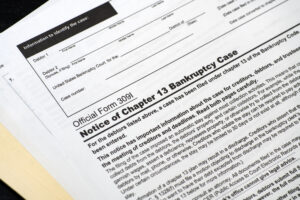When you file bankruptcy, an estate is created. Included in the estate are your assets, both exempt (protected from the trustee) and nonexempt (not protected from the trustee). A typical Chapter 7 bankruptcy is a “no asset case,” meaning that there are no nonexempt assets that the trustee can auction and distribute the proceeds to your creditors.
However, in the rare Chapter 7 case, but more often in Chapter 13 cases, there will be assets to distribute or the payment plan provides for payments to unsecured creditors. In order for an unsecured creditor to receive any distribution, it must file a proof of claim. The proof of claim must state the creditor, basis for the claim (e.g. credit card agreement, contract, etc.), and the amount that you owe.
Your attorney will review the proofs of claim carefully to make sure that the creditor isn’t asking for money than it is owed and that it is a valid claim. If the proof of claim misstates the amount the creditor is owed, and your attorney can produce evidence that the proof of claim is invalid, your attorney will need to file an objection to the proof of claim. The objection will essentially initiate a contested matter in your bankruptcy case and may have to be litigated in the bankruptcy court.


